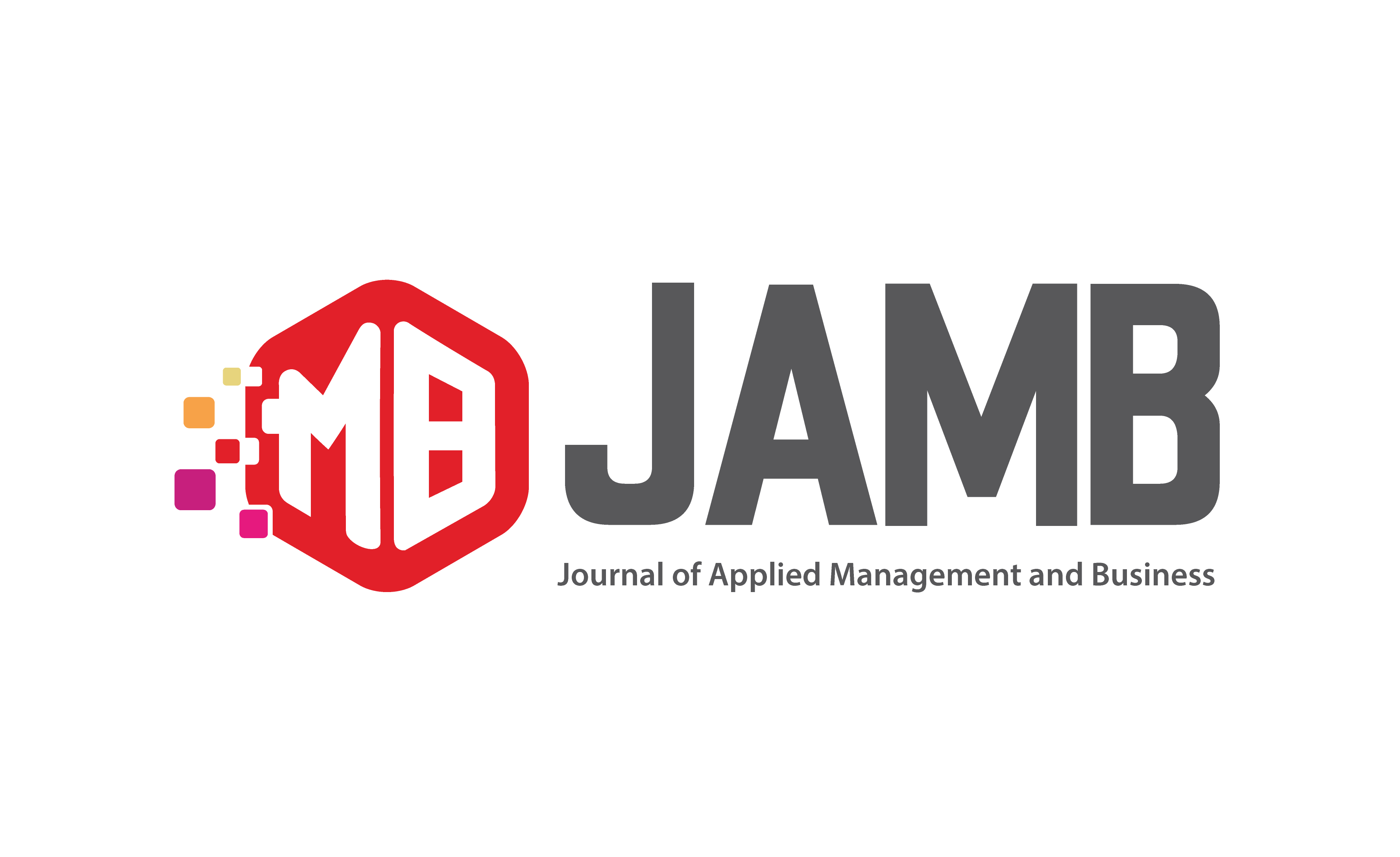THE ADVANTAGE OF CUSTOMER RELATIONSHIP MANAGEMENT IN INCREASING A COMPANY'S INCOME AND REDUCING EXPENDITURES
DOI:
https://doi.org/10.37802/jamb.v3i1.246Keywords:
Customer Relationship Management, Revenue Streams, Cost ReductionsAbstract
It is imperative that a company's customer relationship management (CRM) strategy places a focus on steadily elevating the quality of service that is offered to the company's clientele in order for the business to achieve financial and operational success. The consumers' impressions of the company may be influenced by supporters, who can also inform, instruct, and enlighten them about the various available choices. It is not entirely out of the realm of possibility for a firm to profit from social turmoil by using a variety of different technological strategies. Programs that are intended to maintain consumers as repeat clients are variously referred to as recurrent marketing programs, club participation programs, and customer loyalty programs. All of these programs are essentially the same thing. When a company is able to properly manage its connections with its clients, they see a decrease in the number of customers who opt to discontinue doing business with that particular company. This is because the firm is better able to maintain positive relationships with its clientele. This is due to the fact that satisfied consumers are more inclined to speak positively about a certain firm to other people. The use of CRM paves the way for the company to obtain better levels of income while simultaneously minimizing the levels of operational expenses it incurs.
Downloads
References
R. Santoso and A. Y. A. Fianto, “Composing Marketing Mix for Better Destination Brand In Jawa Timur, Indonesia,” Majalah Ekonomi, no. 1411, pp. 158–167, 2019, doi: https://doi.org/10.36456/majeko.vol24.no2.a2062.
K. E. Kovalenko et al., “Models of business education in Russia and their main competitive advantages,” Journal of Entrepreneurship Education, vol. 22, no. 3, 2019.
R. Santoso, “Disrupsi Pandemi dan Strategi Pemulihan Industri Kreatif,” Jurnal Manajemen dan Kewirausahaan, vol. 7, no. 1, pp. 48–58, Jan. 2022, Accessed: Feb. 20, 2022. [Online]. Available: https://ejournal.uniska-kediri.ac.id/index.php/ManajemenKewirausahaan/article/view/2101/1453
R. Santoso, “Review of Digital Marketing & Business Sustainability of E-Commerce During Pandemic Covid19 In Indonesia,” Jurnal Ilmu Ekonomi Terapan, vol. 5, no. 2, pp. 36–48, 2020.
L. D. Ummah, “Rancang Bangun E-Commerce Pada Toko Kerudung Nuri Collection Berbasis Customer Relationship Management,” Nuansa Informatika, vol. 12, no. 2, pp. 10–17, 2018, doi: 10.25134/nuansa.v12i2.1350.
M. J. Daniels, W. C. Norman, and M. S. Henry, “Estimating income effects of a sport tourism event,” Annals of Tourism Research, vol. 31, no. 1, 2004, doi: 10.1016/j.annals.2003.10.002.
P. Downward, S. Rasciute, and C. Muniz, “Exploring the contribution of activity sports tourism to same-day visit expenditure and duration,” Journal of Sport and Tourism, vol. 24, no. 2, 2020, doi: 10.1080/14775085.2020.1784255.
S. Verma, R. Sharma, S. Deb, and D. Maitra, “Artificial intelligence in marketing: Systematic review and future research direction,” International Journal of Information Management Data Insights, vol. 1, no. 1, 2021, doi: 10.1016/j.jjimei.2020.100002.
M. A. Bisma and A. S. Pramudita, “Analisa Minat Pembelian Online Konsumen Pada Saluran Distribusi Digital Marketplace Online di Kota Bandung,” Competitive, vol. 14, no. 2, p. 36, 2020, doi: 10.36618/competitive.v14i2.617.
A. Safanta, M. R. Shihab, N. F. A. Budi, F. F. Hastiadi, and I. Budi, “Digital marketing strategy for laboratories marketplace,” in Journal of Physics: Conference Series, 2019, vol. 1196, no. 1. doi: 10.1088/1742-6596/1196/1/012078.
C. Pfannes, C. Meyer, U. R. Orth, and G. M. Rose, “Brand narratives: Content and consequences among heritage brands,” Psychology and Marketing, vol. 38, no. 11, 2021, doi: 10.1002/mar.21543.R. A. Raji, S. Mohd Rashid, S. Mohd Ishak, and B. Mohamad, “Do Firm-Created Contents on Social Media Enhance Brand Equity and Consumer Response Among Consumers of Automotive Brands?,” Journal of Promotion Management, vol. 26, no. 1, 2020, doi: 10.1080/10496491.2019.1612490.
R. Chinomona and E. T. Maziriri, “The influence of brand awareness, brand association and product quality on brand loyalty and repurchase intention: A case of male consumers for cosmetic brands in South Africa,” Journal of Business and Retail Management Research, vol. 12, no. 1, 2017, doi: 10.24052/jbrmr/v12is01/tiobabaapqoblariacomcfcbisa.
J. Tarigan, D. C. Widjaja, H. L. Egaputri, and J.-M. Dautrey, “A Study of Indonesia Original Brands Financial Performance,” Indonesian Journal of Business and Entrepreneurship, Jan. 2020, doi: 10.17358/ijbe.6.1.12.
H. M. Y. Diebes and R. A. M. Iriqat, “Social Media As a Strategic Marketing Communication Tool in Palestinian Mobile Telecom Companies - Business To Customers Relationship Perspective,” International Review of Management and Marketing, vol. 9, no. 3, pp. 31–40, 2019, doi: 10.32479/irmm.7714.
F. S. Foltean, S. M. Trif, and D. L. Tuleu, “Customer Relationship Management Capabilities and Social Media Technology Use: Consequences on Firm Performance,” Journal of Business Research, no. December 2017, pp. 1–13, 2018, doi: 10.1016/j.jbusres.2018.10.047.
S. M. Dam and T. C. Dam, “Relationships between Service Quality, Brand Image, Customer Satisfaction, and Customer Loyalty,” Journal of Asian Finance, Economics and Business, vol. 8, no. 3, 2021, doi: 10.13106/jafeb.2021.vol8.no3.0585.
J. Lahap, N. S. Ramli, N. M. Said, S. M. Radzi, and R. A. Zain, “A Study of Brand Image towards Customer’s Satisfaction in the Malaysian Hotel Industry,” Procedia - Social and Behavioral Sciences, vol. 224, pp. 149–157, Jun. 2016, doi: 10.1016/j.sbspro.2016.05.430.
C. Kyhnau, Jan ; Nielsen, “Review of Value Proposition Design,” Journal of Business Models, vol. 3, no. 1, pp. 81–92, 2015.
R. Santoso, “Tinjauan Literatur Tentang Pendidikan, Disiplin, dan Kemampuan Kerja Mendorong Kinerja Karyawan,” Jurnal Media Mahardika, vol. 20, no. 3, pp. 524–533, May 2022.
M. Holmlund and K. Sakyi-Gyinae, “What Do Business Customers Value ? An Empirical Study of Value Propositions in a Servitization Context,” Technology Innovation Management Review, vol. 8, no. 5, pp. 36–44, 2018.











